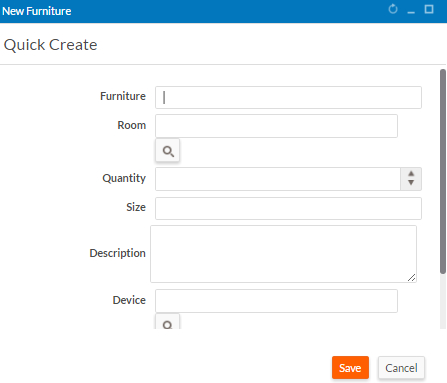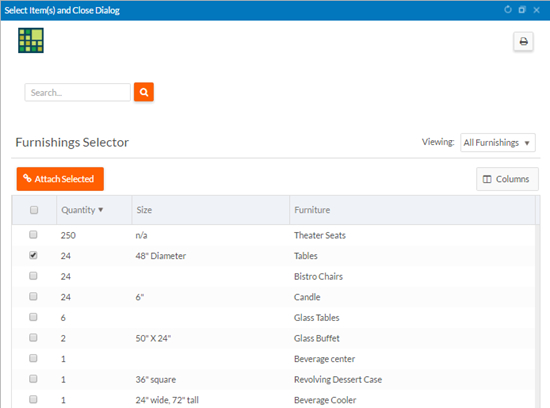Application page types
The default application pages created by Platform provide an interface for users to view, create, update, and delete records. You can modify and clone these default application pages. You can create portal pages and generic pages. You control the visibility of pages by assigning permissions by role and/or by user. End users navigate through application pages using menus. See Application tabs and menus for more information.
When you create an object definition, Platform automatically creates the following pages for you: records list, new, view, edit, status change, mass update, search results, and selector list. If you later modify the underlying object definition, for example, by adding a field or attribute, you can choose which pages Platform will add the new component to. Pages, the page editor, and grid controls describes how you can modify pages by adding and removing components.
The following table describes each page type:
| Type | Purpose |
|---|---|
| Generic | A generic page is not associated with a particular object. When you create a new generic tab, Platform creates a generic page for it. You can use a generic page to render dashboards and other information such as HTML and script components, and to calculate summary information using formula and template fields. See Creating tabs and pages for information about creating generic pages. |
| Record list | A record list page contains a view component that lists records of that object type. |
| New record | A new record page provides the controls for creating a new record. To open this page when viewing a list of object records, click New <object_name>. |
| View | A view record page displays an existing record. Open a view page when viewing a list of object records by clicking the record name. |
| Edit | An edit record page provides the controls for editing an existing record. Open an edit page from a list of records by clicking Edit. |
| Status change | A status change page is used to confirm workflow status changes to an existing record of a particular object type. You can optionally include other fields in this page to be updated. Different versions of this page can be associated with different statuses. See Workflow overview for more information. |
| Mass update | A mass update page provides the controls for updating a group of
selected records simultaneously. The default mass update page runs the onUpdate trigger. You can create different versions of this page to
provide different mass update functionality. View a mass update page from a records list page
by selecting one or more records and selecting Mass
Updates from the tools overflow menu. See an example of a mass
update page. See Updating multiple records for information on
making mass updates. |
| Quick create | A quick create page is a dialog that allows you to create a new record. |
| Search results | A search results page contains a view component for all records that match search criteria. |
| Selector | A selector page appears in a pop-up window, enabling users to select one or more records for a ListView, Grid Control, Multi select pick-list, record attach, ListView filters, Custom report filter fields in the New, Edit, Mass update, Quick create, status change pages across the application. You can open a selector page to select required number of records by clicking the selector icon. Configure the maximum number of records based on your business need for selection in the MaxRecordsInSelector field of the Shared Properties. If the number of records selected exceeds the maximim number of records configured in the Shared Properties, Platform will throw an alert. The maximum number of records that can be configured for selection is 1000. |
| Portal page | A portal page gives portal users access to object records or functionality. You can assign the same portal page to multiple portals. For more information about portals, see Platform portals |
Record list page example
This record list page example from a corporate room reservation system shows the controls available to add or edit furniture records.
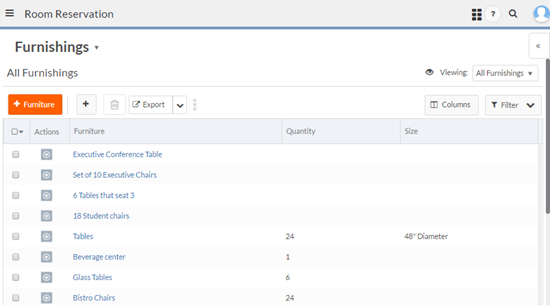
New record page example
This example new record page from a corporate room reservation system has controls for adding related furnishings.
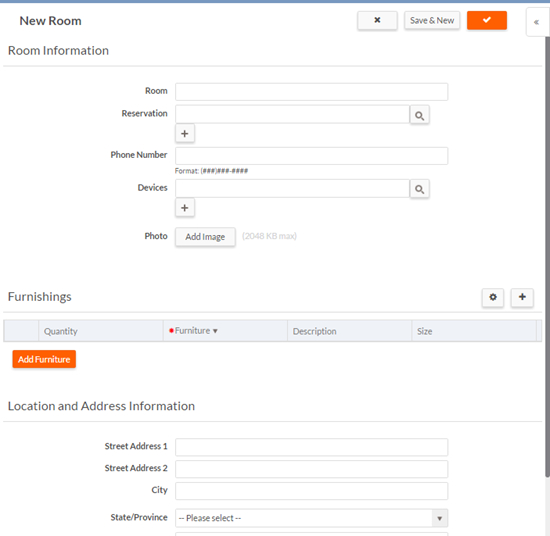
View page example
This example view page from a corporate room reservation system shows record data. The System Info page tab contains information from system fields such as who created the record and when it was last updated.

Edit page example
This example edit page from a corporate room reservation system allows users to edit the record and add or edit the related furnishings and devices.
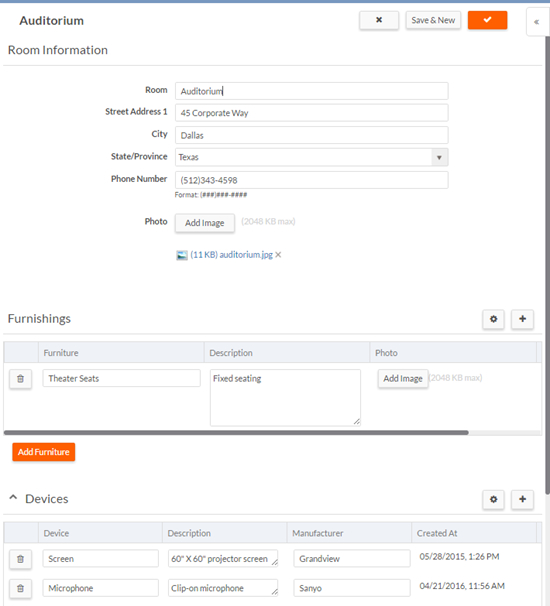
Mass update page example
This example mass update page from a corporate room reservation system allows users to edit multiple records at the same time.
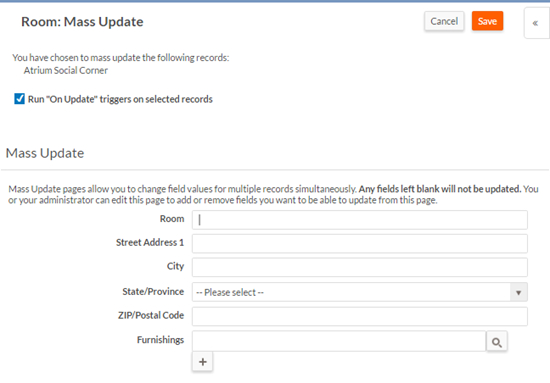
Quick create page example
This example quick create page from a corporate room reservation system allows users to quickly create furniture records.
